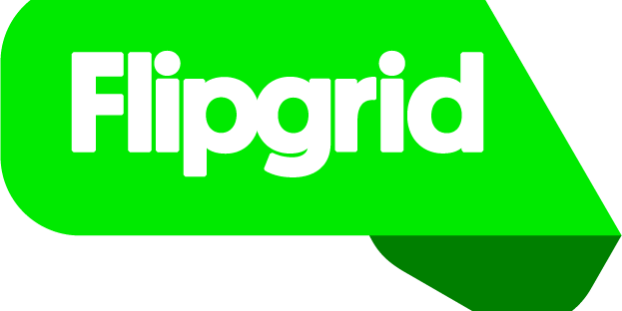By Jeanne Beck
Flipgrid is a video discussion platform where teachers post questions and students answer in video format. Classmates can view and reply to each other’s videos, and the teacher can reply publicly or privately to an individual student. Flipgrid can be integrated into any content area as a way for students to process their learning and communicate about content. For ESL teachers FlipGrid is super helpful in encouraging all students in the classroom to speak out, including shy students, as well as for preparing students for their annual ESL examination, such as the WIDA ACCESS 2.0 assessment in Missouri, the KELPA2 in Kansas, or the ELPA21 in Iowa and Nebraska. Through Fligrid, ESL students can practice recording complex, academic answers and overcoming the awkwardness that is speaking directly to a computer instead of a person.
To get English Learners (ELs) familiar with Flipgrid, I first have students start by answering simpler get-to-know-you questions such as “Describe your perfect vacation,” or “If you could meet anyone, dead or alive, who would you meet and why?” At first, I require students to record for a minimum of 30 seconds and expand this requirement over the next few weeks until most of my students are recording for a minute or longer. (Note: I give newcomers more flexibility on answer length.) Eventually, I require students to record their answer in only one take, just like their ESL examination. Throughout the whole unit, I am recording my own videos to serve as a model as well as show that everyone makes mistakes!
Once kids are familiar with the platform and less awkward about recording, I start asking content-related questions that mimic the trickier questions given on their ESL examination, taking advantage of projects students are doing in their content-area classes. Sixth grade just finished their rainforest unit, for example, so asking “What are the layers of the rainforest and which animals live in each layer?” would require students to access academic language without having them study additional material, allowing us to jump right into speaking practice. Providing a diagram, chart, or pictures similar to their ESL examination is helpful, too, so that students have something to reference while answering.
Before having students answer academic questions, I help them brainstorm through how to answer. If I’ve provided a diagram or other image, I ask students what they should say for their topic sentence and ask them in which order they should talk about their topic. Some other advice I give is to try to say two sentences for each part of the diagram, using strong vocabulary from their content classes, and encouraging them to touch the image provided to remember where they are at while speaking.
Answering academic questions requires ELs to use academic English as well as organize their thoughts, all while recording live. While there’s no substitute for students speaking directly with a teacher who can ask clarifying questions and encourage students to expand on their answers, using Flipgrid can be a great way to encourage communication and train students for the speaking portion of their ESL examinations. If you haven’t tried Flipgrid yet, check it out!
Jeanne Beck is an ESL and technology teacher at California Middle School in California, Missouri. Jeanne received her M.Ed in TESOL from the University of Missouri, as well as a B.A. in International Studies and B.S. in English Education from the same institution. She is currently working on her Ed.S. in administration at William Woods University. She has taught ESL and Language Arts in a variety of K-12 contexts in the US and taught in EFL at two Japanese high schools via the Japan Exchange and Teaching (JET) Program. At the college level, she has taught English and TESOL teacher training courses in Seoul, South Korea at Hankuk University of Foreign Studies’ Graduate School of Education, TESOL Professional Education Center, and Department of International Studies.








